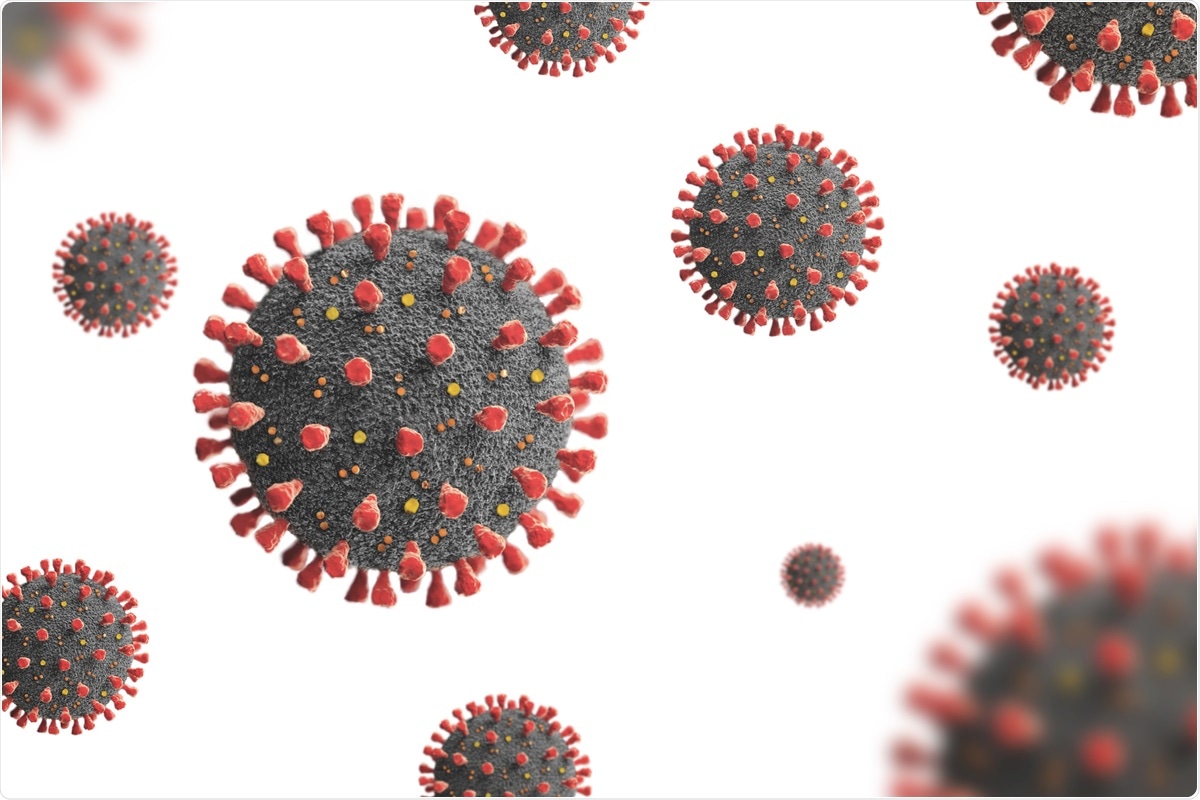Severe acute respiratory syndrome coronavirus 2 (SARS-CoV-2), the causal agent of the coronavirus disease 2019 (COVID-19) pandemic, is a single-stranded positive-sense RNA virus belonging to the Coronaviridae family. The sub-genomic RNA codes for four major structural proteins: spike (S), nucleocapsid (N), membrane (M), and envelope (E).
 Study: Global Prevalence of Adaptive and Prolonged Infections’ Mutations in the Receptor-Binding Domain of the SARS-CoV-2 Spike Protein. Image Credit: Stanisic Vladimir/ Shutterstock
Study: Global Prevalence of Adaptive and Prolonged Infections’ Mutations in the Receptor-Binding Domain of the SARS-CoV-2 Spike Protein. Image Credit: Stanisic Vladimir/ Shutterstock
Background
Vaccines have been developed against SARS-CoV-2 and are currently being administered globally to reduce the spread of this virus. However, owing to mutations and the emergence of new variants, the efficacy of current vaccines that target the S protein may be reduced. The same applies to monoclonal antibodies (mAb), where some SARS-CoV-2 mutations can also resist neutralization by mAb currently in clinical trials to convalescent plasma and plasma from vaccinated individuals.
Mutations that assist SARS-CoV-2 in adapting to the host are called adaptive mutations. A subgroup of these helps the virus escape the host's immune defenses and is called escape mutations. Other mutations may only emerge during prolonged infections in immunocompromised patients (long-term COVID-19 infections), and these are called prolonged infections' mutations.
To effectively vaccinate people or treat them with mAb, it is essential to know the type of variants that these patients carry and are in circulation. A new study has been published in Viruses that used the available nucleotide sequence data on the NCBI COVID-19 database and estimated the global prevalence of adaptive and prolonged infections' mutations in the receptor-binding domain (RBD) of the S protein.
A new study
The most unique feature of the current study, compared to pre-existing studies, is its focus on adaptive and prolonged infections' mutations. It also shows, in a simple way, how to handle a large dataset obtain the required data in a short period.
Given the recent rise in Delta variant infections, the study compares the dynamics of adaptive and prolonged infections' mutations in the global population by splitting the dataset into two timeframes: end of 2019 to May 29th, 2021 and May 30th, 2021 to July 28th, 2021. For this study, a total of 984,769 SARS-CoV-2 nucleotide sequences were retrieved from the NCBI COVID-19 database.
Main findings
Scientists studied stand-alone mutations that have a significant effect on treatment with mAbs. A significant fraction of sequences came from Switzerland (3.5%), the UK (34.2%), and the USA (57.4%). With respect to adaptive mutations until 29th May 2021, irrespective of countries the following order in the global population was observed: N501Y (41.24%) > L452R (6.75%) > E484K (5.32%) > S477N (4.74%) > K417T (1.82%) > T478K (1.8%) > S494P (1.11%). The other mutations were found in less than 0.7% of the sequences (Y453F being the least at 0.01%).
Scientists also studied the prevalence of seven specific prolonged infections' mutations until May 29th, 2021. Globally, these mutations were less prevalent, with the V483A mutation having the highest prevalence (0.014%), and this was found only in the USA and the UK.
The other mutations were found in <0.008% of the sequences. The ordering of the others were as follows: Q493K (0.006%) >T415A (0.005%) >E484A (0.002%) >T470N (0.001%). Some of these mutations (e.g., V483A, E484A, and Q493K/R) were either predicted and/or tested to have resistance towards mAb.
Between May 30th, 2021, and July 28th, 2021, 460,645 SARS-CoV-2 nucleotide sequences were released in the NCBI database, of which 98% came from the USA, the UK, Germany, and Switzerland. The following order was observed with respect to adaptive mutations: N501Y (56.61%) > L452R (29.8%) > T478K (28.54%) > E484K (3.97%) > S477N (1.65%) > K417T (1.45%).
With regard to prolonged infections' mutations, Q493R (0.011%) was found to be the dominant mutation followed by Q493K (0.007%), E484A (0.005%), V483A (0.004%), T470N (0.002%), T415A, and F486I. Overall, the prevalence of these mutations increased during this later part of the sample. As mentioned previously, the Q493R mutation offers significant resistance towards mAb.
Conclusion
Researchers observed a high prevalence of N501Y mutation in the receptor-binding domain of SARS-CoV-2 globally. They also documented a significant prevalence of other adaptive mutations, namely L452R, T478K, E484K, S477N, K417T, N439K, and S494P. Prolonged infections' mutations were observed only in a few sequences from a few countries.
One of the main drawbacks of this study was the non-representativeness across many countries, making the data skewed. Further, scientists did not make use of the GISAID database, which also houses a considerable number of sequences. More countries should actively sequence as many SARS-CoV-2 sequences as feasible and deposit them in the public repository. This will further our understanding of the evolution of SARS-CoV-2 in the human population.
Journal reference:
- Lennerstrand J, Palanisamy N. 2021. Global Prevalence of Adaptive and Prolonged Infections' Mutations in the Receptor-Binding Domain of the SARS-CoV-2 Spike Protein. Viruses. 13(10):1974. doi: https://doi.org/10.3390/v13101974.